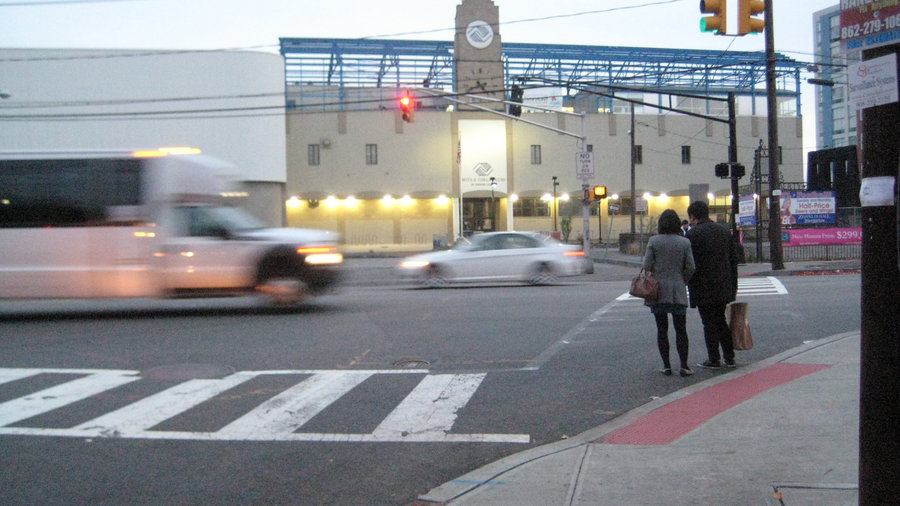The late-August storm that was Hurricane Irene is long gone. But thousands of New Jersey residents, including some in Jersey City, say they are still dealing with the aftermath of flooding and property damage. And while Irene was a rare “100-year” storm that caused major flooding in several cities and towns, residents of two downtown Jersey City neighborhoods say the city’s antiquated and poorly maintained sewer system exacerbated Irene’s damage.
“We had homes under four feet of water on York Street – not because of nine or 10 inches of water that came down in the rainstorm, or because of hurricane surges – but basically, because a flood gate at the Hudson River was shut and York Street backed up,” said Robert Tucker.
“We get major flooding sometimes as much as four times a year.” – Nader Rezai
____________
“This problem has been around for 50 years or so,” said Nader Rezai, a resident of the Van Vorst neighborhood, who said he had about five feet of water in his home after Hurricane Irene. “We get major flooding sometimes as much as four times a year. The problem is getting worse. It isn’t getting any better. And it’s costing me thousands of dollars.”
In the three months since Irene came and went, a group of about 20 property owners in the Paulus Hook and Van Vorst neighborhoods have been trying to get city officials to address flooding in the area that backs up into their homes.
Outdated system
Like many cities in the northeast and Great Lakes region, storm water in Jersey City drains into the same underground system of pipes as raw sewage. This is known as a combined sewer system. Cities outside the Northeast and Great Lakes regions are more likely to have separate drainage systems for their sewage and storm water overflows.
When functioning properly, a combined system drains raw sewage and storm water without incident. In the event of major rainstorms, however, combined systems can become overwhelmed, unable to handle all the water being carried through the pipes.
Flooding can be exacerbated if sewage pipes are poorly maintained and clogged and if green spaces have been paved over due to new construction and development. (Environmentalists like Hackensack Riverkeeper Bill Sheehan point out that natural earth that has not been paved over serves as a natural drainage system for floodwaters.)
According to a September 2011 consent decree between the federal Environmental Protection Agency (EPA) and the Jersey City Municipal Utilities Authority (JCMUA), the federal government alleged that the city “has violated the Clean Water Act and its New Jersey Pollutant Discharge Elimination System General Permit for Combined Sewer Systems in a number of ways, including but not limited to, causing dry weather overflows, failing to properly operate and maintain its combined sewer system…and allowing the discharge of untreated sewage from the collection system onto public and private property located in Jersey City where people have or could come into contact with the untreated sewage.”
The EPA had threatened to sue the JCMUA for failure to comply with the federal Clean Water and its state-issued permit for its combined sewer system. However, as a result of the consent decree, the two parties avoided litigation and the JCMUA has agreed to take steps to be in compliance with the requirements of its combined sewer system permit and the Clean Water Act.
The first steps must be taken before the end of this year, but the deadline for the remaining corrective measures is the end of 2021.
The city was also required to pay a civil penalty of $375,000.
Survey to lead to solutions?
The consent decree, however, does not specifically address some of the problems faced by residents in the Van Vorst and Paulus Hook areas.
The Van Vorst neighborhood is a low-lying area, parts of which are actually below sea level, cut off from sewer lines at the intersection of Grove Street and Grant Street.
According to Althea Bernheim, an aide to Ward E City Councilman Steven Fulop, whose ward includes the Van Vorst and Paulus Hook communities, in the 1980s an unidentified company blocked the connections between the Grove Street and Grand Street sewer lines. The Grove Street line is instead connected only to sewer lines along York Street. Pipes along Bright Street, according to Bernheim, also connect to ones on Grove, which creates further flooding along York Street.
“In addition,” Bernheim wrote in a document prepared for Fulop’s office, “the catch basins are not connected to the sewer system so the water sits and is absorbed by the surrounding houses. Mayo Lynch & Assoc. has been hired to conduct a topographic survey of this area [to] see if these lines can be reconnected.”
The JCMUA is currently doing a survey of the area, some preliminary results of which are due this month.
“The reality is that it shouldn’t take a consent decree to force the city to address an issue when they see people’s property, citywide, sustaining damage due to neglect of the sewer system that we all know [exists],” said Fulop. “As a councilperson with limited oversight of autonomous agencies, I pushed for several fixes outside of the consent decree, these include the cleaning and repair of the Eighth Street line, and [my office has] been focused on the fixing of the York/Bright/Grove area.”
But residents are frustrated that the problem hasn’t been addressed before now.
“The city has known there’s a problem in the Van Vorst and Paulus Hook area,” said Rezai. “I want to know, what was the city’s plan to fix the problem? Did the city ever have a plan?”
While the city awaits the results of the Mayo Lynch survey, the city’s Environmental Commission is floating the possibility of creating green infrastructure, specifically rain gardens, to mitigate flooding in low-lying areas.
E-mail E. Assata Wright at awright@hudsonreporter.com.
